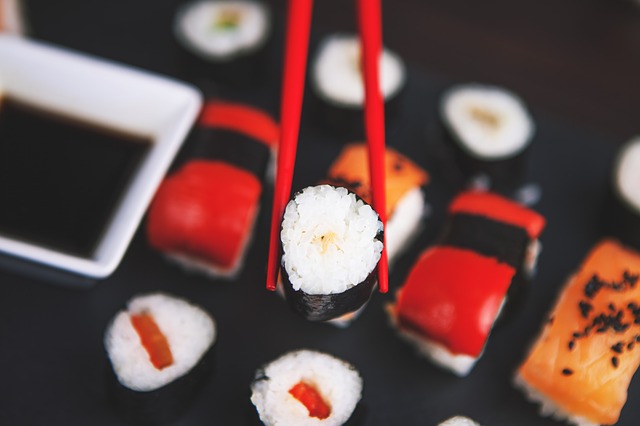Author Jennifer 8. Lee explains how the chopstick spread from the East to the West — and was designed to give you the perfect bite.
.
Watch:
Glossary
- utensil – a tool with a particular use, especially in a kitchen
- pincer movement – a combination of two forces acting against an opposing force
- jade – a hard, typically green stone used for ornaments
- tripod – a stand or table having three legs
Answer the questions:
- How shouldn’t one use chopsticks?
- How do chopsticks differ in various countries?
- How were Asian men perceived in the USA in the late 1800s?
- Why were chopsticks very useful during the Shang dynasty?
- Do the Chinese use knives and forks?
- How do chopsticks reflect the communal nature of eating food?
- What legend does the speaker tell?
Practice Makes Perfect
Use the words in bold to complete the gaps in the article below. To check your answers, go to: https://blogs.scientificamerican.com/food-matters/ain-t-nobody-got-tine-for-that-the-invention-and-evolution-of-the-fork/
cuisine sanitary tablecloths utensil posh
paramount anxiety tip chopsticks cutlery bare
Ain’t Nobody Got Tine For That! The Invention and Evolution of the Fork
At one point in time, there was a fork in the road and some people decided to eat with it. Okay, that may be oversimplifying things a bit too much.
Cooper-Hewitt’s Sarah Coffin curated the museum’s “Feeding Desire” exhibition and has spent over thirty years researching the topic. She explains the fork was late to join the knife and spoon to complete the West’s cutlery trio. “Both the knife and spoon really have ancient origins. The spoon was the first thing people put into their mouth. The fork started its existence as a 1. ………. to hold a piece of meat or to hold something while you carved it. Its entrance into individual usage comes really as a dessert object.”
Forks were used as 2. ……… in the Byzantine Empire and made their way west during the eleventh century when a Byzantine princess married the doge of Venice. She brought a two-tined gold fork with her to eat fruits preserved in syrup and sugar, known as suckets.
In addition to sweets from the Byzantine and Ottoman empires, other foods from the East continued to shape European 3. ……… , though not necessarily the way they ate it. Although pasta was embraced when it was introduced from China, Coffin suspects that instead of learning how to use 4. ………. , Italians preferred to repurpose an implement they already had. In order to eat long noodles, they used a toothpick-like utensil called a punteruolo. It was made more efficient by the addition of another prong. By the fifteenth century, forks were quite common amongst the upper class and wealthy merchant class in Italy.
“Usually, there is a functional reason why trends stick,” says Coffin. Not only was the fork more 5. ………. than eating with 6. ……… hands, it was a safer alternative to consuming meat by placing it on the 7. ……. of a sharp knife. Also, people often wiped their soiled hands on 8. ………….. when they were finished eating. Although forks were pricey, they could easily be washed and cost less than the laundering and staff needed to maintain the expensive textiles.
In the United States, one dinner pattern could contain 146 unique pieces. This was a great contrast to Europeans, who had vastly fewer options. “The fact is the French–for whom culinary concerns are 9. ……………–had very few other, with the exception of fish knives and forks and a few dessert and salad forks,” Coffin tells me.
The belief that people should be seen eating with a fork went on well into the twentieth century in the United States. With so many fork options, many felt a sense of angst when sitting down to a 10. ………. dinner party.
Darra Goldstein, who co-curated “Feeding Desire” with Coffin, describes a nervous condition known as “fork 11. ……… ” that is still pervasive and emblematic of American class stratification, despite the decreased number of options.
ANSWERS: 1. utensil; 2. cutlery; 3. cuisine; 4. chopsticks; 5. sanitary; 6. bare; 7. tip; 8. tablecloths; 9. paramount; 10. posh; 11. anxiety
Discuss:
- Have you ever tried to eat with chopsticks?
- Do you like tasting new food and experimenting in the kitchen?
- What’s your favourite cuisine?
- Are you a fussy / picky eater?
- What do you eat when you feel peckish?
- When was the last time you wolfed down your meal?
- Do you think eating should always be a social occasion?
- Are there any eating manners in your country that you like and dislike?
- Is the issue of healthy eating important to you?
Explore it more to create your own teaching-learning experience!
Good manners and dining etiquette..
(1498)





